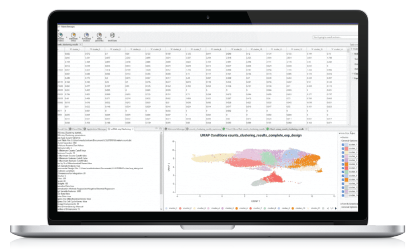De novo transcriptome analysis in Datura metel and identification of genes related to withanolides biosynthesis pathway
Researchers:
- Madhavi Hewadikaram
- Dr Sanjaya Deepal Bathige
- Prof. Veranja Karunaratne
Project Overview
Withanolides are secondary plant compounds that belong to a family of C28 ergostane-type steroidal δ lactones that mainly belong to the family Solanaceae of the plant kingdom. Withanolides have held interest and importance in the scientific community owing to their structural features and display of significant medicinal properties such as antitumor, anti-inflammatory, anti-microbial, immune-modulatory, and insect antifeedant activities.
Withanolides-producing plants are widely used in traditional medicine all over the world. Withanolides have been effective against head and neck squamous cell carcinoma, melanomas, human breast cancers, and nonmalignant human renal epithelial cells. However, low concentrations of active ingredients in raw materials, and their complex chemical structures have become difficult to synthesize these complex natural compounds through synthetic chemistry manner. Thus, large quantities of plant raw materials and some semi-synthesis processes have been involved in withanolides products to full fill the demand of its needs in the market. Lack of knowledge in biosynthesis pathways in withanolides has restrained the limitations of proper exploitation of plants for large-scale production. Therefore, the importance of understanding the level of withanolide biosynthesis and its regulations should be understood to open up large-scale withanolide production in a cost-effective manner. Bioinformatics plays a crucial role in elucidating the remaining unknown genes involved. Since the leaves of the Solanaceae plant family showed unusually high levels of withanolides content, this study focused on transcriptomes of leaf, flower, and leaf under stress-induced conditions in withanolides producing plant named Datura metel.
 Datura metel (Wikipedia)
Datura metel (Wikipedia)
Contribution of OmicsBox
OmicsBox was mainly involved in most of the bioinformatics analysis. Functional analysis and transcriptome analysis are widely used for this research. At first, the quality assessment for raw sequences was done using FASTQ quality check tools, and sequences were processed with the help of FASTQ preprocessing tools available in OmicsBox. The transcriptome analysis module was mainly used for RNAseq transcriptome assembly and transcriptome level unigene quantifications. Furthermore, pairwise differential expression analysis carried out to find up-regulated genes in different tissues and induced conditions. Once the upregulated candidate genes were selected, the functional analysis module was used for the functional gene annotation process. Almost all the functional annotation tools like BLAST, InterProScan annotation, GeneOntology analysis (Mapping and Annotations), Enrichment analysis, and EggNOG annotations were useful for this study. The cloud facility provided by OmicsBox was beneficial to annotate these large transcriptome sequences. Even the simple tools like gene selection tools and Venn Diagram facilities provided by OmicsBox were helpful to save time during this study period.
Conclusion
With the help of OmicsBox, this study enables to find out possible candidate genes related to the withanolides biosynthesis pathway. These possible candidate genes are currently further analyzed through other biological approaches to elucidate the genes involved in the withanolides biosynthesis pathway.
Research Center:
Sri Lanka Institute of Nanotechnology Synthetic and Molecular Biology Laboratory, Sri Lanka



